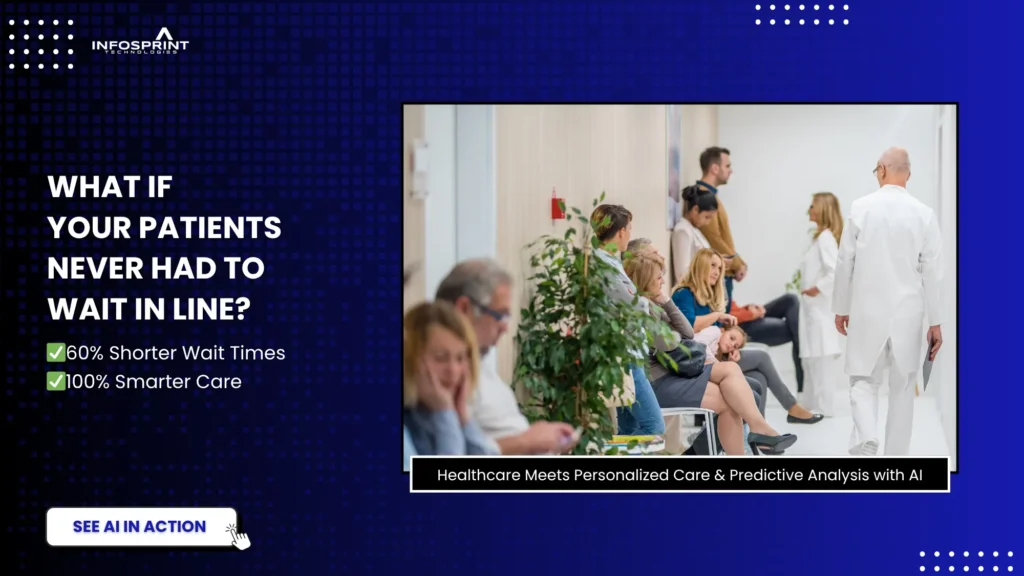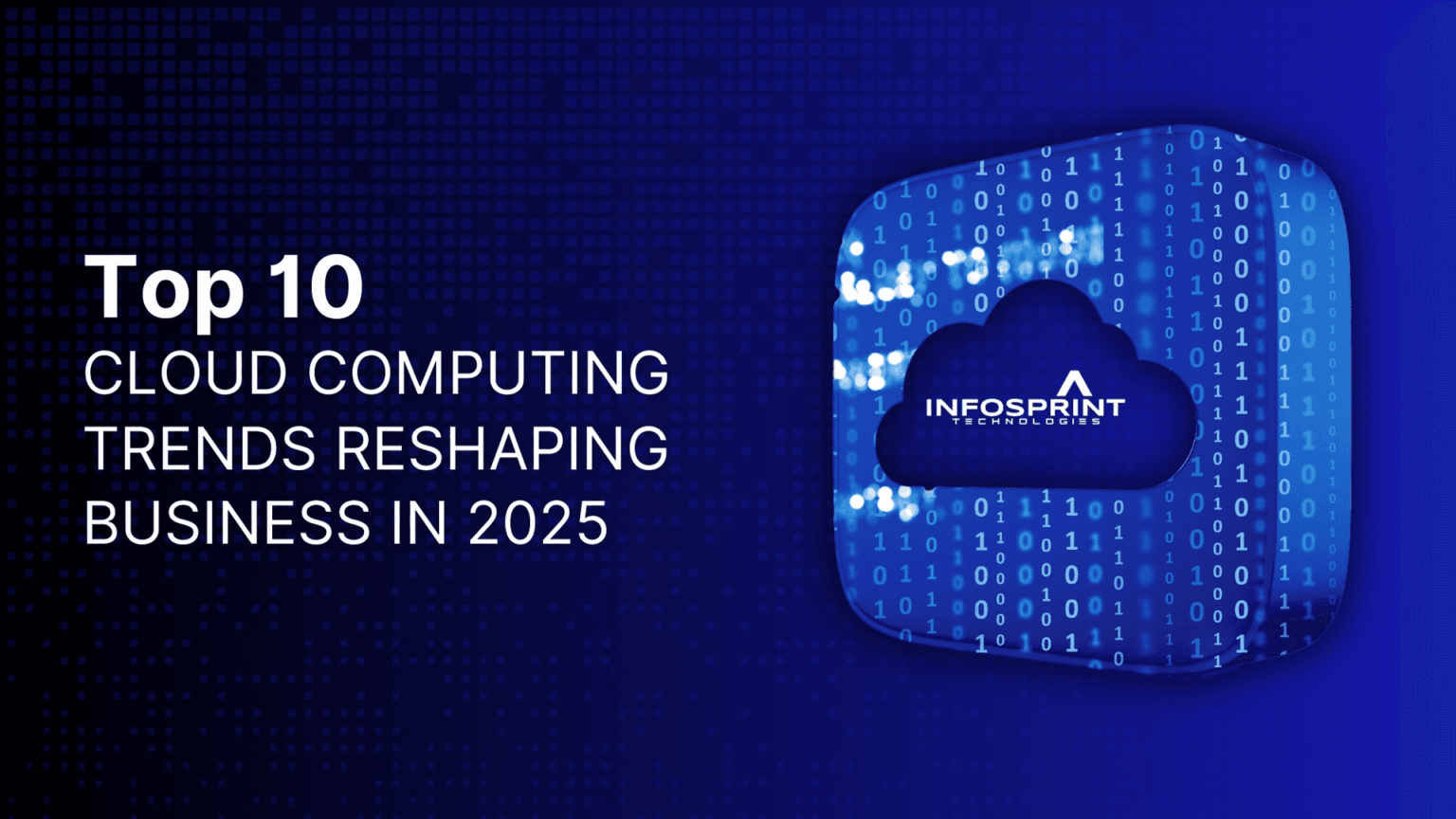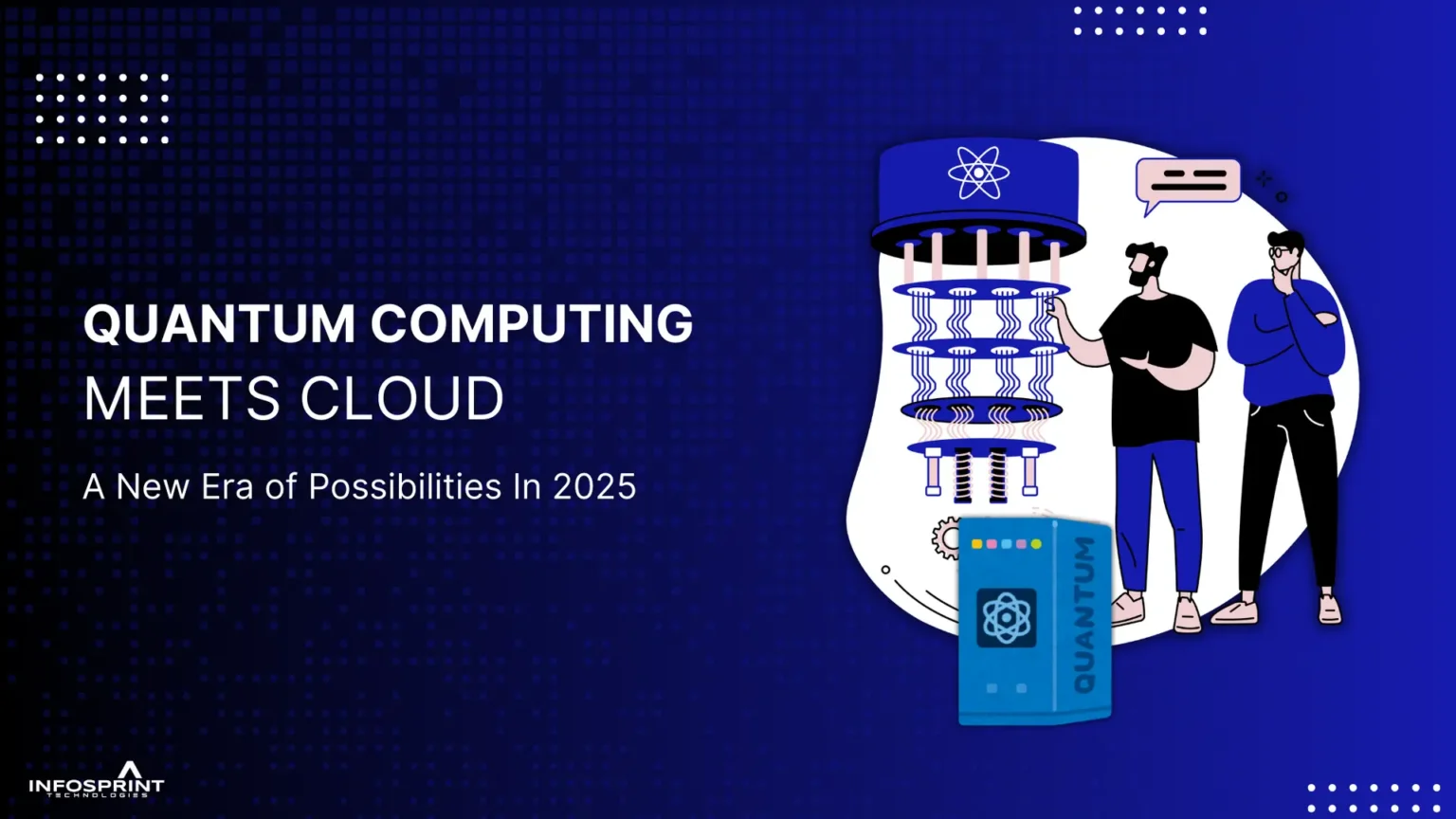Healthcare in 2026: How Personalized Medicine Is Cutting Patient Wait Times by 60%

On this Page
- What is personalized healthcare?
- How AI is Powering Personalized Medicine and Predictive Diagnostics in 2026
- Personalized Medicine: From One-Size-Fits-All to One-of-a-Kind
- Predictive Diagnostics: Prevention Over Cure
- Clinical Decision Support: Augmenting the Physician, Not Replacing Them
- Which Technologies Are Driving Faster Patient Journeys?
- The Future of AI-Driven Healthcare
Did you know that worldwide, medication errors alone cost the global healthcare system an estimated $42 billion annually?
These staggering statistics reveal the harsh reality and the profound challenges within the healthcare system. Many of us have experienced the frustration of feeling like just another number, navigating hurried appointments and generic treatments that miss the mark, perpetuating a cycle of illness and inefficiency.
But what if this pervasive challenge could become a relic of the past? The year is 2026, and that transformation isn’t a distant aspiration; it’s already underway.
We are in the world of AI, where robust algorithms, cloud platforms, and real-time data pipelines are ushering in a new era of personalized medicine and predictive diagnostics. Infosprint Technologies is a digital transformation company that navigates the AI world, showing how AI is revolutionizing clinical workflows, enabling remarkably early disease detection, customizing treatments down to your unique biological makeup, and empowering both patients and healthcare providers with real-time insights.
What is personalized healthcare?
The text reflects a shift from one-size-fits-all approaches to individualized treatment plans based on your unique genetics and health history. The future of personalized medicine involves AI systems analyzing medical data to identify diseases earlier and enhance outcomes. At Infosprint Technologies, we’re seeing trends in personalized healthcare for 2025 that emphasize predictive analytics, moving care from treatment to prevention.
How AI is Powering Personalized Medicine and Predictive Diagnostics in 2026
Healthcare systems around the world are under pressure: aging populations, chronic disease prevalence, and the growing costs of treatment. AI offers a solution not only to optimize operations but also to redefine how we treat and manage illnesses, inspiring a new era of healthcare.
The chronic disease management is forecasted to cross $7billon
In 2026, AI is being adopted across three central pillars:
- Personalized Medicine – Customizing care based on an individual’s genetic makeup, environment, and lifestyle.
- Predictive Diagnostics – Leveraging data and machine learning to forecast disease before it manifests.
- Clinical Decision Support – Providing real-time recommendations to physicians based on historical data and current patient conditions.
Let’s explore how each of these is changing the landscape.
Personalized Medicine: From One-Size-Fits-All to One-of-a-Kind
Traditional medicine often relies on standardized treatments—what works for most should work for you. This ‘one-size-fits-all’ approach, while convenient, overlooks the impact of genetic variability, lifestyle factors, and social determinants of health, leading to treatments that may not be as effective as they could be.
In 2026, personalized medicine powered by AI is redefining that narrative. Here’s how:
How Do Personalized Healthcare Systems Cut Wait Times?
Did you know that switching from reactive to proactive healthcare approaches can reduce emergency department visits by up to 25%? Personalized healthcare systems are fundamentally changing how medical institutions manage patient flow and wait times, providing a more efficient and effective approach.
a) Genomic AI Meets Personalized Medicine in 2026
Imagine launching a cancer treatment plan that’s not just effective, but built around your DNA. By 2026, AI-powered genomic platforms will turn that vision into reality.
What Personalized Medicine Brings to the Table
- Hyper-targeted therapies: AI systems decode vast genomic datasets to match patients with treatments designed for their unique mutation profiles, much like tailored cancer therapeutics discussed in the video. These platforms accelerate diagnosis and streamline treatment selection, often in just weeks.
- Dynamic dose optimization: Beyond finding the right drug, AI tools can now fine-tune dosages based on how your body metabolizes medication, making therapy safer and more effective.
- Faster drug discovery: Feeding genomic data into AI accelerates candidate drug selection, slashing discovery timelines from years to months.
Now here’s where real teams apply theory into action, integrating genomic AI into healthcare systems can deliver:
- Earlier & better detection: AI-powered liquid biopsies and genomic screening tools flag cancers in early stages, significantly improving survival outcomes.
- Smarter clinical trials: AI intelligently stratifies patients, matching them to the right trial based on their genetic and phenotypic profile, boosting trial success and patient safety.
- Cost and access triumphs: As AI-driven sequencing costs drop below $500 and analysis pipelines shift to GPUs and the cloud, advanced therapies are no longer reserved for elite clinics.
- End-to-end pipelines: From sample intake to AI-generated treatment recommendations, seamlessly integrated into EHRs.
- Equity-focused analytics: Built-in bias detection ensures models perform fairly across diverse populations.
- Clinical-grade assurance: Deployment with FDA/CE-compliant validation, ensuring AI systems meet regulatory rigor and proven efficacy.
b) Digital twins and simulation models for treatment planning
Digital twins—virtual replicas of physical systems—are revolutionizing personalized medicine. At their core, these models dynamically integrate real-time patient data to create accurate virtual representations of organs or entire physiological systems.
- Hospitals test interventions on these twins before applying them in real life.
- This minimizes risk and enhances surgical precision.
For example, researchers at Johns Hopkins create personalized digital twins representing heart geometry to predict and treat heart rhythm disorders. This approach was the first digital twin in cardiology approved by the FDA and the first used in a randomized clinical trial. Furthermore, these simulations allow physicians to compress time, predicting how conditions might evolve over years rather than waiting for actual progression.
Predictive Diagnostics: Prevention Over Cure
The real breakthrough of AI is not in treating diseases better—it’s in catching them early, or even preventing them altogether. The U.S. healthcare system has historically operated on a reactive model, focusing on treating conditions after they emerge rather than preventing them.
But For every dollar invested in preventive care, the return on investment ranges from $3 to $6 due to avoided emergency care and long-term treatment costs.
The benefits of proactive care extend beyond cost savings. Patients experience shorter wait times because:
- Healthcare resources are allocated more efficiently
- Fewer emergency situations create bottlenecks
- Routine preventative care distributes patient visits more evenly
- Early interventions prevent conditions from requiring extensive treatment
a) Early Disease Detection
Predictive analytics represents a powerful tool in personalized healthcare. By analyzing vast amounts of patient data, healthcare providers can identify subtle signs of decline that often go unnoticed, allowing for timely intervention before conditions worsen.
AI-powered predictive models not only enhance early detection but also play a pivotal role in ensuring consistent and accurate diagnosis across diverse patient populations—an essential pillar in modern healthcare systems.
- Medical imaging (X-rays, MRIs, CT scans)
- Blood samples and pathology reports
- EHRs (Electronic Health Records) across time
Real-World Example (2026):
In diabetic retinopathy screening, AI-driven image recognition now catches early signs with 98% accuracy, sometimes before a human radiologist would even detect a problem.
b) AI-Powered Risk Scoring
By mining thousands of data points from past patients, AI predicts:
- Who is most likely to suffer from a heart attack in the next 6 months
- Which patients are at risk of readmission after discharge
- Whether a cancer is likely to metastasize
This enables healthcare professionals to intervene earlier, offer lifestyle adjustments, prescribe preventive medications, or refer patients for further testing.
Clinical Decision Support: Augmenting the Physician, Not Replacing Them
One of the fears surrounding AI in healthcare has been that it might “replace doctors.” However, in 2026, the reality is far more collaborative. AI is becoming the co-pilot for physicians, offering suggestions, reminders, and second opinions.
a) Real-Time Diagnosis Assistance
Tools like Google’s Med-PaLM and IBM’s Watson Health have undergone significant evolution. AI now:
- Suggests likely diagnoses based on patient symptoms and data
- Recommends diagnostic tests
- Warns about drug interactions or contraindications
A recent study showed AI interfaces nailed first differential diagnoses ~80% of the time—compared to 50–70% for physicians—and got there almost 45% faster
b) AI in Surgery
AI assists surgeons during operations by:
- Mapping tumor boundaries: In brain and cancer surgeries, real-time AI highlights tumor margins to avoid cutting healthy tissue
- Monitoring vital signs in real-time: Advanced systems assess intra-operative trends, alerting clinicians to complications before they escalate
- Offering robotic precision for minimally invasive procedures: Augmented reality overlays guide robotic instruments in complex minimally invasive procedures—enhancing precision, reducing blood loss, and speeding recovery
c) Clinical Workflow Automation
From automated scribing (converting speech to medical notes) to smart scheduling, AI saves physicians hours of administrative burden, letting them focus on what truly matters: patient care.
Voice-to-text AI scribes, such as Microsoft’s DAX Copilot, Abridge, DeepScribe, and Regard, capture conversations and generate EHR notes with 94% accuracy, reducing documentation time from approximately 90 minutes to under 30 minutes daily.
Documentation & Decision support: Platforms like Regard auto-generate diagnostic summaries and treatment plans, linking directly with EHRs—cutting note-taking labor by up to 70% and catching potential errors .
Which Technologies Are Driving Faster Patient Journeys?
According to recent healthcare studies, technologies enabling personalized care have reduced average wait times by up to 60% in pilot implementations. These innovations are transforming what personalized healthcare means for patients across the medical spectrum.
a) AI-powered triage and scheduling systems
AI-powered triage tools analyze patient symptoms and medical history to categorize cases based on urgency, directing individuals to appropriate care levels. For instance, Johns Hopkins’ TriageGO system helps nurses confidently identify low-risk patients who can follow more efficient care pathways. The technology has proven so effective it’s now implemented across multiple hospitals, including Johns Hopkins Hospital, Bayview Medical Center, and Howard County General Hospital.
Studies show AI triage systems deliver remarkable benefits:
- Machine learning models consistently demonstrate superior discrimination abilities compared to conventional triage systems
- AI-based triage can handle up to 80% of routine healthcare queries
- 24/7 availability ensures no patient is left without guidance, regardless of time or location
b) Primary care: Virtual assistants and chatbots streamline intake
Currently, 72% of healthcare providers believe that virtual assistants and chatbots can reduce their administrative workload. Practices implementing virtual assistants for appointment management have seen:
- Remarkably, virtual assistants have reduced no-show rates by up to 25%.
- About 70% of patients interact with their provider after receiving automated reminders.
- These systems simplify check-in by enabling patients to complete forms and sign consent documents on their phones, aligning with personalized healthcare trends for 2025.
The Future of AI-Driven Healthcare
AI in healthcare is no longer a futuristic buzzword—it is a transformative force actively shaping how we detect, prevent, and treat disease in 2026. With the power of personalized medicine and predictive diagnostics, we are not just improving healthcare systems; we are redefining what it means to heal.
By 2030, AI is expected to:
- Enable continuous monitoring through nanodevices
- Decode multi-omics data (genomics, proteomics, microbiomics) for hyper-personalized care
- Facilitate AI-led clinical trials with real-time patient matching and adaptive testing
The healthcare leaders of today must embrace this technology, not to replace human compassion, but to amplify clinical expertise, reduce burdens, and deliver more humane, intelligent, and effective patient care.
If you’re ready to embrace AI in your healthcare operations, explore Infosprint’s healthcare digital transformation services to drive intelligent, future-ready patient care.
Related Posts

Top 10 Cloud Computing Technologies to Look Out for in 2025

Consistent Diagnosis: The Cornerstone of Modern Healthcare




